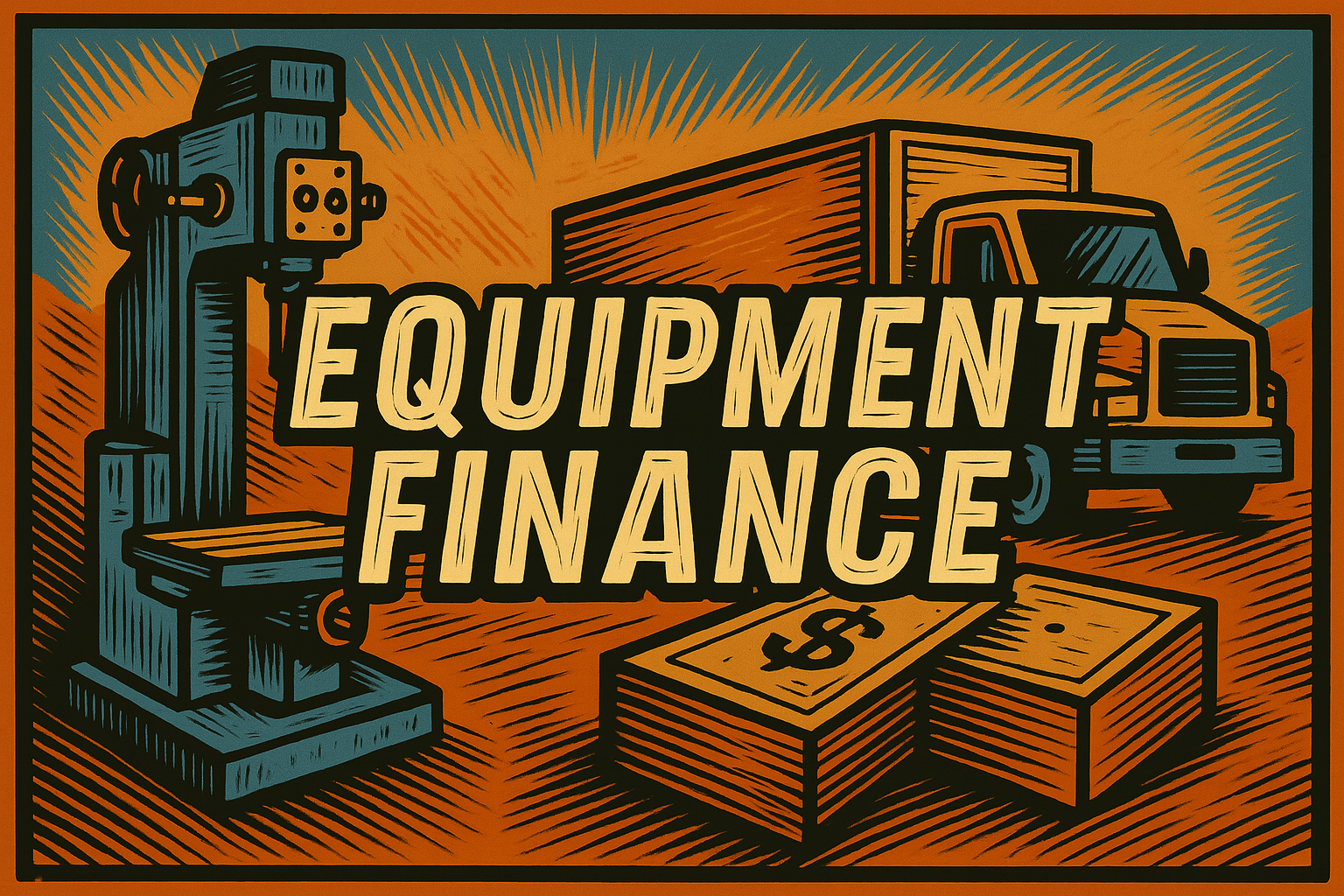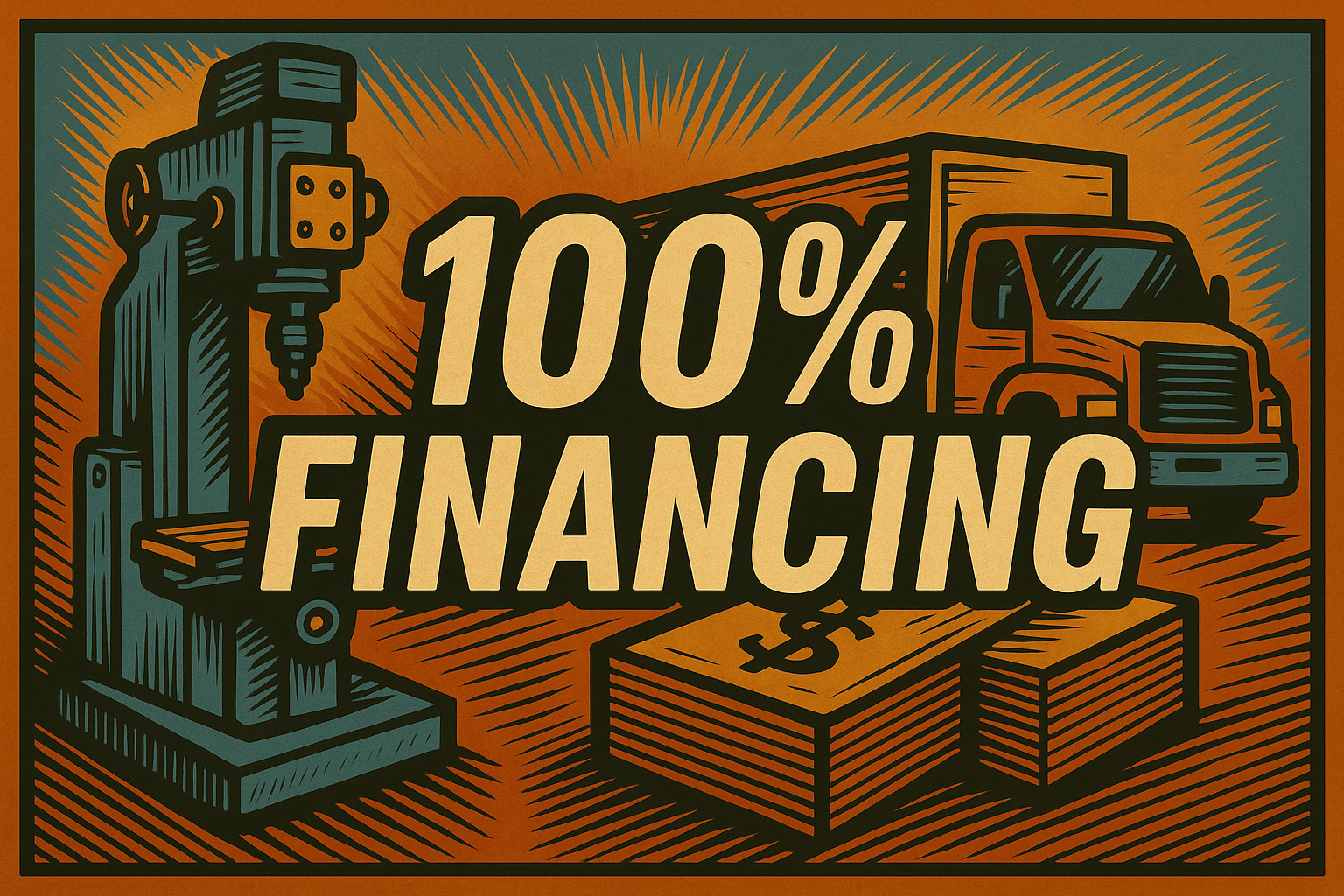Equipment Finance
“Fund the Grit Behind the Grind.”

Equipment Financing:
Powering Business Growth Through Strategic Asset Acquisition
Equipment Financing is a specialized financial solution designed to help businesses acquire the tangible assets they need to operate and grow—without draining working capital. Whether it’s upgrading technology, adding a new fleet of vehicles, or investing in heavy machinery, equipment financing provides a practical, structured path to ownership or use.
At its core, Equipment Financing allows businesses to purchase or lease equipment by borrowing the funds needed, with the financed equipment itself typically serving as collateral.
Additionally, most equipment finance providers offer 100% financing, which reduces the need for large upfront expenditures, enabling companies to preserve liquidity while acquiring mission-critical tools and infrastructure.
Key Characteristics
| Feature | Details |
|---|---|
| Purpose | Purchasing or leasing physical business equipment |
| Loan Amount | Usually $10,000 to $10 million+ depending on asset type |
| Term Length | 2 to 7 years (aligned with equipment lifespan) |
| Collateral | The equipment being financed |
| Structure | Can be a loan or lease (FMV lease, capital lease, etc.) (see more below) |
| Down Payment | Typically $0, but can be required depending on lender and credit profile |
Benefits of Equipment Financing
Preserves Working Capital: Avoid large upfront payments and retain cash for payroll, operations, etc.
Flexible Terms: Repayment schedules can often be customized to match the asset’s useful life or your revenue cycle.
Ownership Options: Choose between financing to own or leasing for flexibility.
Boosts productivity with immediate access to critical tools
Tax Advantages: In many cases, businesses can deduct all or part of the cost of financed equipment. (more on this below)
Often Ideal For:
Manufacturers needing industrial machinery, robotics, or fabrication tools.
Transportation Companies acquiring trucks, trailers, or delivery vans.
Technology Firms upgrading computer systems, servers, or communication hardware.
Construction firms purchasing heavy equipment
Medical practices investing in diagnostic or imaging tools
- Any Business that relies on equipment to deliver value.
What 100% Financing Means:
With 100% financing, the lender covers the entire cost of the equipment, meaning:
- No down payment is required
- Businesses can acquire equipment without upfront capital
- In some cases, soft costs (like delivery, installation, or training) can also be included in the financed amount
Lenders are often comfortable with 100% financing because:
- The equipment serves as collateral
- The asset is essential to business operations, reducing default risk
- Strong borrowers or repeat customers present lower risk profiles
Considerations for Business Owners:
- Preserves working capital and cash flow
- May carry slightly higher interest rates or stricter terms due to increased lender exposure
- Not every borrower will qualify—lenders assess creditworthiness, time in business, and equipment type

Types of Equipment Financing
Equipment Loans
You borrow funds to purchase equipment and make monthly payments over a fixed term. At the end of the term, you own the equipment outright. This is best for long-term assets that retain value.
Equipment Leasing
Instead of buying, you lease the equipment for a set period. Ideal if the equipment is likely to become obsolete quickly (e.g., IT hardware or specialized medical devices). Leases may be operating leases (essentially a rental agreement) or capital leases (similar to purchasing, structured like a loan, with a buyout option). See Operating Leases vs. Capital Leases
Sale-Leaseback
Sell owned equipment to a lender and lease it back. This allows businesses to access capital tied up in owned assets without disrupting operations.
Vendor Financing
Some equipment manufacturers or sellers offer financing directly, often in partnership with financial institutions. This can simplify the purchasing process and may include promotional rates.
Types of Equipment Financing – Examples
Equipment Loan
Scenario: A construction company needs to purchase a $200,000 bulldozer.
- They take out a 5-year equipment loan from a bank.
- Make fixed monthly payments.
- At the end of the term, they own the bulldozer outright.
Why this works: Bulldozers retain value, are used long-term, and ownership makes sense for the business.
Equipment Leasing
Scenario: A healthcare clinic leases $180,000 worth of digital imaging equipment for 3 years.
- Technology changes quickly, so they don’t want to be stuck with outdated equipment.
- They opt for an operating lease with included maintenance and the option to upgrade at the end.
Why this works: The equipment is high-tech and prone to obsolescence. Leasing offers flexibility and avoids depreciation risk.
Sale-Leaseback
Scenario: A logistics firm owns a fleet of delivery vans valued at $500,000 but needs working capital.
- They sell the vans to a lender and immediately lease them back for regular use.
- They continue operations without interruption and unlock capital to invest in growth.
Why this works: It turns owned assets into cash without losing access to the equipment.
Vendor Financing
Scenario: A tech startup buys $50,000 of servers directly from the manufacturer.
- The manufacturer offers 0% interest for 12 months through its in-house financing program.
- The startup avoids third-party banks and keeps the purchase process simple.
Why this works: Vendor financing provides convenient, promotional terms and is tailored to the specific product.
Tax Benefits of Equipment Financing
One of the most compelling reasons businesses choose equipment financing is the potential for substantial tax savings:
Section 179 Deduction
Under IRS Section 179, businesses may deduct the full purchase price of qualifying equipment financed and placed into service during the tax year—up to certain limits. This applies whether the equipment is financed or purchased outright.Bonus Depreciation
In addition to Section 179, businesses may be eligible to depreciate a significant portion of the equipment cost in the first year, helping to offset income and reduce tax liability.Operating Expense Deductions (for operating leases)
If you lease equipment, lease payments may be deductible as a business expense, reducing taxable income.
Note: Tax laws change periodically.
Always consult a qualified tax advisor to understand how current regulations apply to your specific situation.

Final Thoughts
Equipment financing is more than just a way to buy tools—it’s a strategic lever for growth, innovation, and operational efficiency. Whether you’re expanding production, upgrading tech, or enhancing logistics, this financing option offers flexibility, protection of cash flow, and potential tax perks to help your business move forward with confidence.
Related Topic
See: Operating Leases vs. Capital Leases… Choosing the Right Equipment Financing Structure

